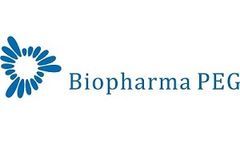Refine by
Pharmacokinetic Articles & Analysis
82 articles found
This technique improves the pharmacokinetic and pharmacodynamic properties of drugs, enhancing their stability, solubility, and circulation time while reducing immunogenicity. ...
By masking lipophilicity, PEG linkers help highly-loaded ADCs reach their target cells with improved pharmacokinetics. l Increased Drug Loading: Hydrophilic PEG linkers enable higher DAR by solubilizing hydrophobic payloads, allowing more drug molecules per antibody. l Improved Pharmacokinetics: The PEG chain prolongs circulation. ...
Enzyme replacement therapies are already in use for rare genetic disorders, such as Gaucher’s or Fabry’s disease, and researchers are pushing further by modifying enzymes for improved pharmacokinetics and targeting. In cancer research, engineered enzymes are being explored to activate prodrugs locally at the tumor site, minimizing systemic toxicity—a testament ...
Conclusion The Caco-2 permeability assay remains a cornerstone of pharmacokinetic studies in drug development. By providing critical insights into drug absorption, it not only informs researchers about the viability of potential therapeutic agents but also guides formulation and testing strategies. ...
S9 metabolic stability assays provide critical insights into how a compound behaves within biological systems, especially concerning its metabolism, stability, and overall pharmacokinetics. At the core of S9 metabolic stability is the S9 fraction, which is a liver extract obtained from a homogenate of liver tissues, typically from certain rodent species. ...
These enzymes are crucial for the detoxification processes in the liver and affect the pharmacokinetics of numerous medications. Understanding the function and importance of cytochrome P450 is essential for fields ranging from pharmacology to toxicology and clinical medicine. ...
They also provide invaluable insights into the pharmacokinetics and toxicity profiles of PROTAC candidates. By identifying potential off-target effects early in the development process, researchers can refine their candidates to enhance specificity and safety. ...
For instance, larger animals such as dogs or pigs are often preferred in the study of cardiology, while zebrafish provide a rapid assessment of pharmacokinetics and toxicity. Phases of Drug Screening Drug screening typically unfolds in several key phases: Preclinical Testing: Before any drug can enter human trials, it undergoes extensive preclinical testing in animal models. This ...
For example, the incorporation of phosphorus-containing moieties can enhance the pharmacokinetic properties of drugs, improving their efficacy and bioavailability. ...
In the realm of pharmaceutical research and development, ADME testing services play a pivotal role in evaluating the pharmacokinetics of drug candidates. ADME stands for Absorption, Distribution, Metabolism, and Excretion, which are critical processes that determine the fate of a drug within the body. ...
Most of the old drugs are currently limited in their effectiveness because of poor pharmacokinetics, simple clearance by the body and cytotoxicity. Nanoparticle technology in particular, Nano drug delivery system is getting a lot of attention and application in medicine in the recent years. ...
Pharmacokinetics (PK) and pharmacodynamics (PD) are two fundamental pillars in the field of pharmacology and drug development. ...
One of the earliest approved liposomal drugs was Doxil, a PEGylated liposomal formulation of doxorubicin, which demonstrated improved pharmacokinetics and reduced cardiotoxicity compared to the free drug. Subsequent developments have focused on optimizing liposome composition and design to enhance stability, drug loading, and targeting capabilities. ...
Clinical trials are the backbone of modern medicine, responsible for bringing innovative, safe, and efficient treatments to market after rigorous testing and evaluation. However, the conventional process of conducting these trials has often been long, expensive, and fraught with inefficiencies¹. The advent of predictive analytics is reshaping the landscape of clinical trials, ushering in a ...
They have shown promise in improving drug efficacy, selectivity, and pharmacokinetic properties compared to natural peptides. Among the various aspects of peptidomimetic studies, peptidomimetic drug screening is a powerful method to address many needs. ...
This article explores the intricacies of Pharmacokinetic and Toxicokinetic studies and their critical role in PK/TK studies. Pharmacokinetics (PK) and Toxicokinetics (TK) studies are virtues of a broader scientific discipline called pharmacology. ...
Pharmacokinetic characteristics are composed of and determined by drug absorption, distribution, metabolism and excretion. The structure, physiological properties and pharmacokinetic characteristics of monoclonal antibodies are different from those of traditional small molecule drugs. ...
The presence of glycosylated impurities can not only change the chemical properties of drugs, such as solubility and stability, but also affect the biological properties of drugs, such as bioavailability and pharmacokinetics. Moreover, some glycosylated impurities may have potential toxicity, posing a threat to human health.How to Detect Glycosylated ...
These tests can help determine effective doses and potential side effects, thereby guiding the design of clinical trials.4. Pharmacokinetics and Pharmacodynamics (PK/PD) AnalysisStudying the absorption, distribution, metabolism, and excretion characteristics of ADC in the body, as well as the relationship between drug concentration and efficacy, is the basis for understanding its ...
PEGylation increases the molecular size and alters the pharmacokinetic properties of these drugs, reducing renal clearance and proteolytic degradation. ...












